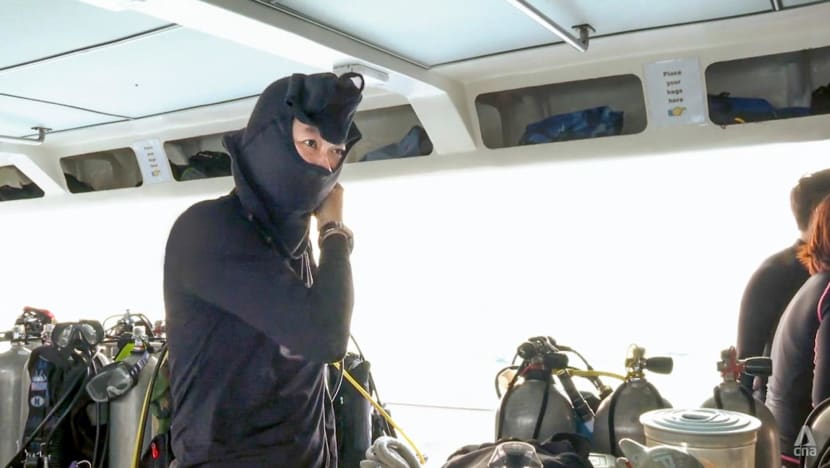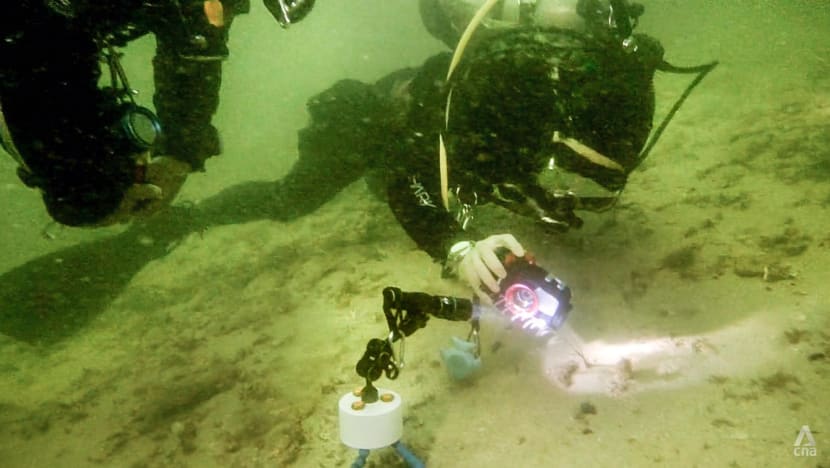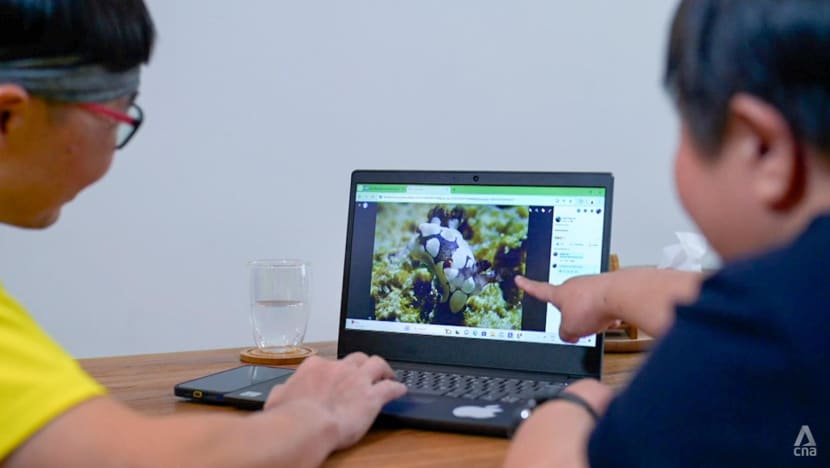Our waters aren’t ‘boring’: Meet the disabled diver who photographs Singapore’s sea critters
With only one functioning arm, Kelvin Pung is on a quest to document and promote the island’s aquatic gems such as the Pikachu nudibranch. The programme On The Red Dot finds out how his efforts are quietly paying off.

Although he has lost mobility in one arm, Kelvin Pung enjoys diving and underwater photography.

This audio is generated by an AI tool.
SINGAPORE: As the waves roll gently beneath him, Kelvin Pung guides his diving hood over his head, tugging it into place with his right hand.
With focused effort, he works his limbs into his wetsuit before reaching round his torso to fasten various straps into position.
“When I try to rig up my scuba gear, there are a lot of clips I need to buckle,” says the 46-year-old when asked about the most challenging part of getting ready for a dive.
But swimming with only one functioning arm is “very easy”, he adds.
The avid underwater photographer has been capturing artistic photos of Singapore’s marine critters since 2014. Losing the use of his left arm in an accident years ago has not deterred his quest to document and promote the island’s aquatic gems.


And gems there are, like the “doughnut doto” — which is a nudibranch, or sea slug, with ring-shaped appendages — that is also found in Indonesia, Papua New Guinea and southern Africa but possibly nowhere else.
“According to the regular divers, … they can only find this in fewer than three or four places in the world,” he says.
He has also shot photos of the Pikachu nudibranch, another specimen sought after by marine photographers overseas and mainly found in the Indo-Pacific’s tropical waters.
Pung is one of four individuals featured in On The Red Dot’s latest series, Secret Heroes, which celebrates Singaporeans who are quietly contributing to the nation in their own way despite the odds stacked against them.


BLOWN AWAY BY BEAUTY OF MARINE LIFE
It was in 1996 when Pung lost the use of his left arm in a serious road accident. “The nerves got pulled out (of) my spinal cord,” he shares. “I can’t move my fingers — all the way to my shoulder.”
For a left-hander, the loss of mobility was devastating. But after training his right hand to take over his motor tasks, he continued with activities he felt he could “still do well” despite his disability, such as swimming.
Then in 2011, on a snorkelling trip to the Maldives, he found himself blown away by the beauty of marine life.
He felt a desire to learn scuba diving to explore more of the sea’s hidden depths — and was curious about how far he could challenge himself.
WATCH: I’m a disabled dive photographer — How my work protects marine life (9:08)
The next year, he started taking diving lessons from a family friend who was a certified instructor, keeping to a teacher-student ratio of 1:2 for safety.
He later picked up photography and eventually began taking photos underwater, using his right hand to operate the camera while lighting his subjects with a torch mounted on a tripod on the seafloor.
“When I’m diving, the water actually helps to compensate for the weight of the camera,” he says. “It makes it easier to operate with one hand.”
What is less favourable for him — and other divers — are the visibility conditions in local waters. Visibility can drop to as low as two metres on some days, owing to land reclamation works and heavy sea traffic around the island.


This may be why many Singaporeans think “there’s nothing here” when it comes to finding notable sea creatures. “A lot of people are sceptical about local marine life,” Pung says.
But if you look for food sources that draw marine critters, he adds, such as coral colonies and seaweed clusters, you have a better chance of spotting Singapore’s elusive fauna.
An experienced guide can help point out specimens that mainly range in size from 2 millimetres to 10 centimetres. Newer divers may miss these critters and thus dismiss Singapore’s waters as “boring”, he continues.
He has photographed a myriad of sea creatures, from billowing corals to shimmering fish to scuttling crustaceans. His favourite critters remain the sea slugs of the nudibranch order, which come in a riot of colours and forms.
“So with my photographs, I (hope that people) will know that there’s actually a lot of marine life in Singapore,” he says.


DISCOVERING ‘NEW RECORDS’ FOR SINGAPORE
Together with fellow enthusiasts, Pung started a Facebook page in 2015, named SG Underwater Macro Photographers, to showcase their photos highlighting Singapore’s marine biodiversity.
Much of the pleasure of creating close-ups of these critters, he says, comes from the surprises the divers get when they process their photos.
The images give these creatures a larger-than-life quality, revealing their intricate features and beauty not apparent to the naked eye.
“It’s just the details that amaze me,” Pung enthuses. “Every time I look (at) my computer … I zoom in and see different things.”

With 1,900 members now, the Facebook page has also become a repository of information for researchers.
“With more divers posting in the group, we get to … discover that some of the critters (photographed) can be new records for Singapore,” says environmental volunteer Toh Chay Hoon, 47, a group member who specialises in identifying sea slugs.
“New records” refer to wildlife with a known scientific name, but which had never been sighted in a certain area before.
One such discovery Toh helped to identify was the nudibranch, Trapania scurra, which diver Lim Chee Ying photographed in March near Pulau Hantu. The new biodiversity record was later published in the journal, Nature in Singapore.

Such photographic evidence is crucial in helping scientists to better understand a species’ ecological movements, habitats and behaviour.
Pung’s passion for promoting local marine wildlife has also rubbed off on others such as professional commercial photographer Toh Xing Jie, who credits Pung with introducing him to Singapore’s underwater treasures five years ago.
“Kelvin was the one who brought me along on one of his (dive) trips,” he recounts, adding that Pung showed him the various sea creatures around Pulau Hantu, for instance.
When Resorts World Sentosa’s SEA Aquarium approached the 30-year-old to mount an underwater macrophotography exhibition this year, it was a no-brainer for him to call Pung for assistance.
“He’s the one who showed me the ropes,” says Toh Xing Jie. “It’s only right that he has to be part of this project.”


“I’m the lighting assistant,” quips Pung, who also helped to locate the underwater creatures. “It’s like teamwork. He shoots, I look, and I hold the torch.”
As their photos continue to spotlight the beauties of local marine wildlife, they hope to arouse more Singaporeans’ curiosity and appreciation of what lies in these waters.
“After 500 dives, I’m still spotting new creatures I’ve never seen before,” says Pung. “I still have the urge to look for new creatures (on) every dive.
“You’ll be awed by what you can see under the water.”
Watch this episode of the On The Red Dot series Secret Heroes here. The programme airs on Channel 5 every Friday at 9.30pm.











.JPG?itok=3-5GMZeX)
.JPG?h=2be05324&itok=rQ2Zl8T_)







